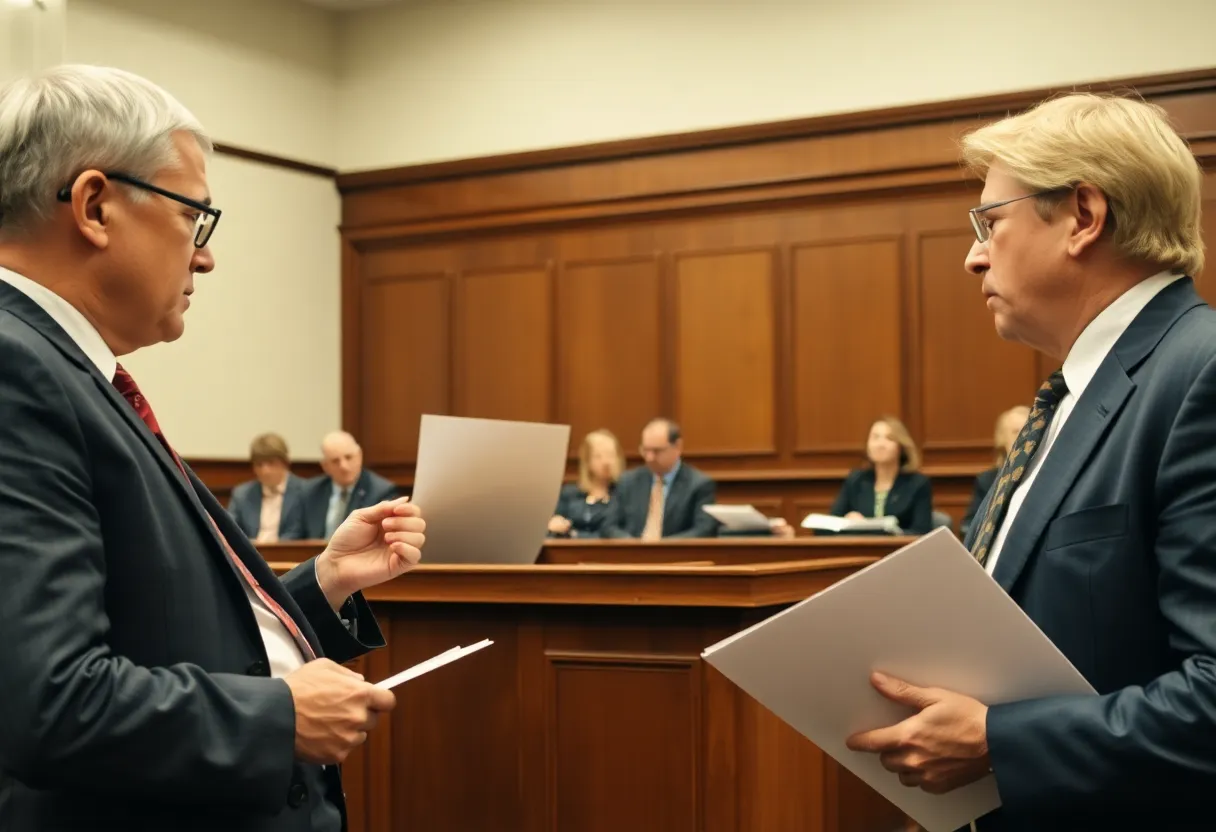News Summary
Recent legal developments in asbestos litigation reveal significant rulings regarding liability coverage and corporate strategies, impacting thousands of victims and companies.
Recent Developments in Asbestos Litigation: Key Rulings and Corporate Maneuvers
As the battle against the dangers of asbestos exposure rages on, recent legal developments shed light on significant rulings regarding liability coverage for injured parties. A notable decision came from the U.S. District Court for the Northern District of Texas, which on March 31, 2025, granted motions for summary judgment from two excess insurers, establishing critical precedents in asbestos litigation.
Legal Dispute Over Excess Insurance Policies
The court ruled in favor of Canal Insurance Company and Interstate Fire & Casualty Company, determining that their excess insurance policies were not triggered by two of three lawsuits stemming from asbestos-related injuries associated with products manufactured by Murco Wall Products, Inc. during the 1970s and 1980s. This ruling is pivotal as it underscores the complexities surrounding insurance liability in cases of delayed illness resulting from asbestos exposure.
In the related case, Berkshire Hathaway Specialty Insurance Company had previously agreed to defend Murco in three lawsuits but sought contributions from Canal and Interstate, claiming their policies should share the coverage burden. However, the defendants argued that the alleged exposures occurred outside the time periods of their policies.
Understanding “Occurrence” in Asbestos Claims
Judge Mark T. Pittman evaluated when the “occurrence” of injury under an exposure theory was deemed to take place, emphasizing the significance of the timing of exposure. Canal and Interstate maintained that Texas legal precedent required coverage only if exposure happened within their policy periods. In contrast, Berkshire contended that injuries occurring post-exposure warranted consideration based on a case-by-case approach.
The judge ultimately concurred with the exposure theory as established in past rulings, clarifying that the term “exposure” encompasses when the initial contact with asbestos fibers took place, irrespective of the manifestation of diseases, which could take decades to surface. This ruling marks an important step in clarifying the legal interpretation of what triggers liability under these complex asbestos-related cases.
Implications for Future Asbestos Litigation
This recent ruling not only clarifies the application of exposure-trigger theories in Texas but also emphasizes the necessity of reviewing the precise language within liability policies. The court’s distinction reinforces the need for plaintiffs to demonstrate actual exposure during the relevant time frames to establish grounds for claims against insurers.
Johnson & Johnson’s Ongoing Bankruptcy Battle
In another corner of the asbestos litigation landscape, Johnson & Johnson continues to navigate a contentious bankruptcy process, recently allowed to progress in Texas despite robust opposition. Their attempt to settle nearly 62,000 ongoing lawsuits related to alleged ovarian cancer linked to asbestos has drawn significant scrutiny, with critics labeling the filing as “forum shopping.”
This legal strategy recognized as the “Texas Two Step,” involves splitting entities to separate liabilities from assets, allowing companies to seek bankruptcy protection while keeping operational interests intact. J&J’s maneuver aims for an almost $9 billion settlement, showcasing a controversial and strategic approach to handling mass tort claims.
Georgia-Pacific’s Similar Tactics
Georgia-Pacific, a subsidiary of Koch Industries, has been utilizing similar tactics for years, effectively evading responsibility for asbestos claims while litigation persists. The U.S. Supreme Court recently declined to intervene in Georgia-Pacific’s ongoing cases, allowing this corporate strategy to continue unchallenged. This raises significant concerns regarding victims’ access to justice and compensation, as corporate entities leverage legal loopholes to mitigate financial liability.
A Call for Greater Advocacy
The ongoing developments in the landscape of asbestos litigation highlight a pressing need for legislative changes to ensure victims of asbestos exposure receive adequate compensation while holding corporations accountable for their actions. With both the insurance and corporate sectors employing intricate legal strategies to navigate accountability, advocates emphasize the vital importance of affecting change in current laws.
As the fallout from past asbestos practices continues to unravel, affected individuals and advocates must remain vigilant in pressing for transparency and justice to ensure no more victims suffer from the debilitating effects of this hazardous material. It is clear that the fight against asbestos is not over yet.
Deeper Dive: News & Info About This Topic
HERE Resources
USS Gurke: The Legacy of Asbestos Exposure for Navy Veterans
Setbacks for Mansfield Community Diagnostic Centre
High Court Dismisses Mesothelioma Claim Linked to Garage
Revolutionary Study Unveils New Insights into Mesothelioma Treatment
Recent Losses: Remembering Lives Impacted by Mesothelioma and Asbestos Exposure
Breakthrough Research Offers New Hope for Mesothelioma Patients
Mesothelioma: The Silent Killer – Early Detection Challenges and Hope on the Horizon
Progress on the Horizon for Malignant Pleural Mesothelioma Treatment
Urgent Updates on Asbestos Management in Sheffield
Historic Old Sarum Airfield Engulfed in Flames
Additional Resources
- JD Supra: Occurrence Provisions Within Excess Insurance Policies
- Wikipedia: Asbestos
- Asbestos.com: Texas Judge Calls J&J’s Third Bankruptcy Attempt Different
- Google Search: Asbestos Litigation
- Lever News: A Corporate Poisoner Two Steps Out of Its Toxic Liability
- Google Scholar: Asbestos Litigation
- Jacobin: Supreme Court, Georgia-Pacific, Texas Two-Step
- Encyclopedia Britannica: Asbestos



















